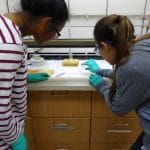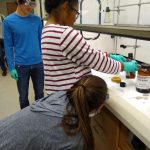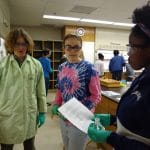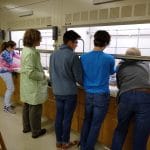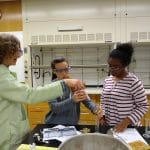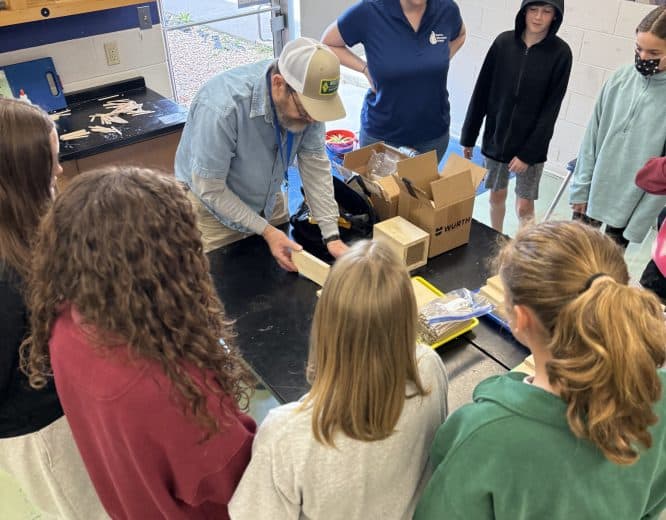Chemistry students visit JMU lab
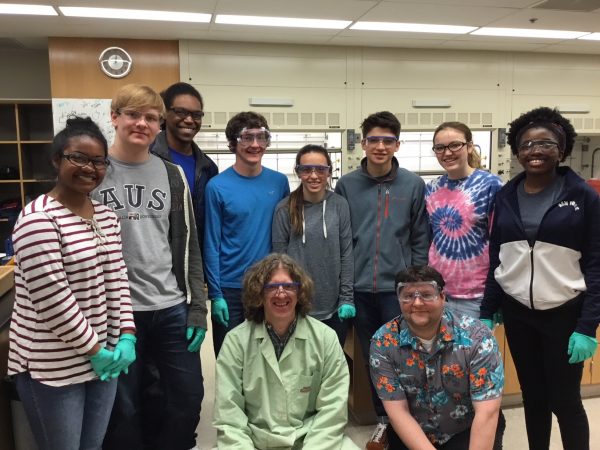
Eastern Mennonite High School chemistry students participated in a second-year college level chemistry lab at James Madison University on April 4 as part of their dual enrollment chemistry class with Kevin Carini.
In preparation for the visit to the JMU lab, the EMHS students have been studying organic functional groups and basic organic nomenclature, says chemistry teacher Kevin Carini. Nomenclature in chemistry is a set of rules to generate systemic names for chemical compounds.
The students heard a brief lecture by Kevin L. Caran, PhD, in his lab at JMU. Students set up glassware, performed a reaction, and used a gas chromatograph (an instrument for separating, analyzing, and identifying substances contained in a volatile liquid or gaseous sample) to conform the identity of the products they synthesized.
Later in the day, students visited the university’s Carrier Library to learn about 3D modeling and 3D printing. They heard a lecture about the history of 3D modeling and 3D printers from Lukas Wheeler, innovation services specialist, and designed a keychain using Tinkercad, a 3D CAD design tool.
The keychain modeling files were saved to be printed out using the 3D printers at EMS.
EMHS offers dual enrollment physics, chemistry and robotic classes in collaboration with James Madison University and Eastern Mennonite University. Dual enrollment means the students are enrolled for credit at both the university and EMHS for the class.
The lab details: The lab was the dehydration of 2-methylcyclohexanol. The experimental purpose was to explore the acid-catalyzed dehydration of an asymmetric alcohol, 2-methylcyclohexanol, and use gas chromatography to confirm the validity of Zaitsev’s Rule.

